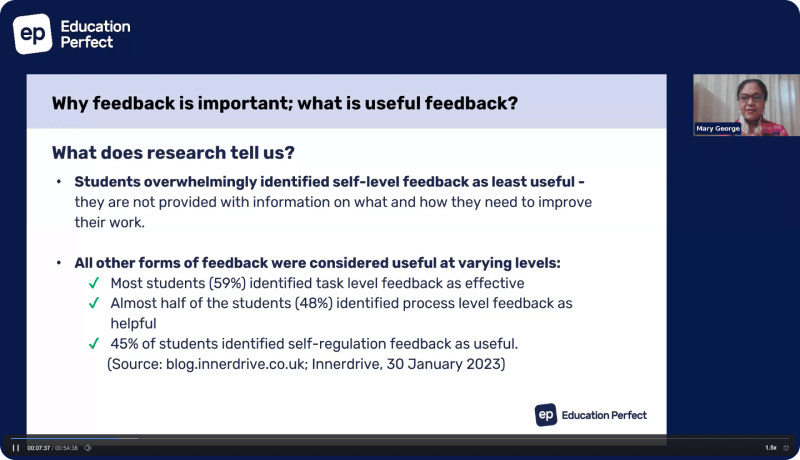Three ways to effectively differentiate your classroom.

Recently, I came across some old lecture notes from my teaching diploma. I spotted one of my comments in the margin exclaiming “differentiation is essential – make sure I do this for every lesson!!” Isn’t the optimism of beginning teachers the best? In my first few years of teaching I certainly tried, but often found myself bogged down by rigid assessments that couldn’t be co-constructed, time constraints that wouldn’t allow for content modification, or feeling overwhelmed with too many students. But seeing these old lecture notes re-energised me and got me thinking about how it might be possible to weave differentiation into the fabric of each lesson.
For some, differentiation will be a natural part of every lesson and for others, it can be really challenging. Most of the time, we probably differentiate without explicitly acknowledging it, through knowing our learners and their needs. Let’s refresh our thoughts on this oft-used buzzword and explore how we can meaningfully incorporate it into our practice.
What is differentiation?
Teachers can differentiate:
- the content (what students learn)
- the process (how students acquire information)
- the product (how students demonstrate learning)
- and the learning environment (where and with whom students learn)
These decisions are informed by student readiness, interest and learning profile (Tomlinson et al., 2003).
Differentiation is not the goal, but a “result of actions taken to ensure student needs and readiness are considered, addressed and assessed accordingly to ensure the methods teachers choose to address those needs are effective” (Westman, 2018). Differentiation centres around student voice and relies on strong teacher-student relationships that value flexibility within structure, clear learning intentions, multiple types of assessment and evidence, and authentic learning opportunities (Westman, 2018).
Use student voice to guide instruction
Knowing your students takes a triangulated approach: data from past assessments, student observations, and dialogue with the student. Investing some time with simple questions can deepen your understanding of student readiness, interests, and learning profile to allow differentiation to be authentically incorporated. Questions to ask students to help drive instruction could be:
- Content: What intrigues you about this concept/topic? Or, (for an apathetic student), why do you find this topic boring?
- Process: Is taking notes helping you to understand the material? If so, how do you know? If not, what learning strategy might be more helpful?
- Product: In an ideal world where you could show your understanding of this concept/topic in any way, how would you show your understanding?
- Learning environment: Are you and your teammates able to work collaboratively on this task? If so, how do you know? If not, what are your teams’ obstacles?
Classroom examples of differentiation
When I canvassed our team of teachers for ideas, here is what they said:
1. Pick-your-station activity. Station activities break up instruction into manageable chunks that can be tailored for all types of learners. Trudi, an experienced language teacher, describes setting up five different stations for her students to practice Hiragana, the basic Japanese phonetic alphabet. Groups worked on different tasks:
- Erasable whiteboards
- Tactile work with 3d characters
- Readers
- Computers
- Drawing on each others’ hands
Throughout the activities, she could closely monitor who needed more support, who needed extension, and how her students’ interactions informed her next steps.
2. Flip the lesson, flexible groups the following day. This is one way to differentiate process, content and the learning environment according to student readiness, while using flexible grouping and formative assessment to inform next steps.
Students first engage with the learning material before the lesson so that when they are in class, you can start with a short formative assessment. Then based on their readiness, have different tasks and flexible groups for students to join. As students demonstrate understanding with their tasks, they can move onto other appropriate tasks – sometimes individually and sometimes in groups.
3. Year-long league teams. Jimmy, our Global Head of English, describes differentiation as “chunking, increased literacy support, ensuring information is provided in a variety of forms and extra feedback for those who require it.” The most effective strategy he ever employed was year-long team leagues.
- Students are grouped into varying abilities and all had the same learning goals.
- Teams earned points if they made sure every team member understood the material when they did quizzes and games.
- Students were given instructions on how to teach each other the content and all teams had a number of teacher support tokens which any member could use as long as the team agreed.
Overall, students were motivated, had ownership of the learning tasks, were able to work at their own pace and in their own way.
So what?
Differentiation isn’t about creating individual lesson plans, giving students a free-for-all choice with no guidance, or meant to overwhelm your workload. Differentiation is about knowing your students and responding to their needs in a range of ways where they have agency and ownership. It’s not always easy, but with careful planning, time for student voice, and varying strategies, it can be done.
What is one way you incorporate differentiation into your classroom? What difficulties do you encounter with differentiation? How have you overcome any challenges?



